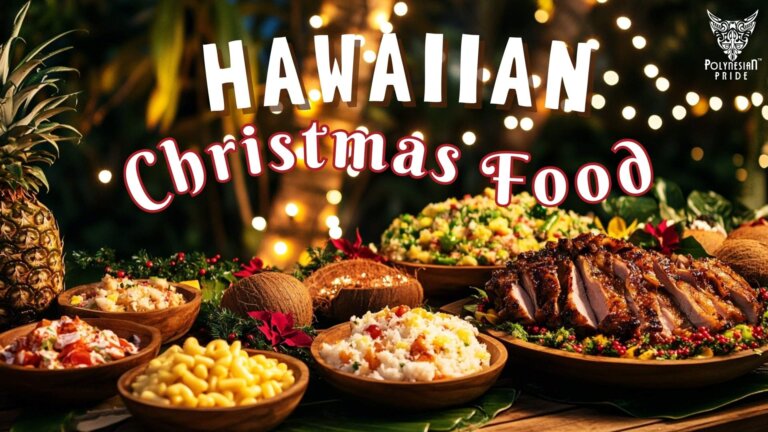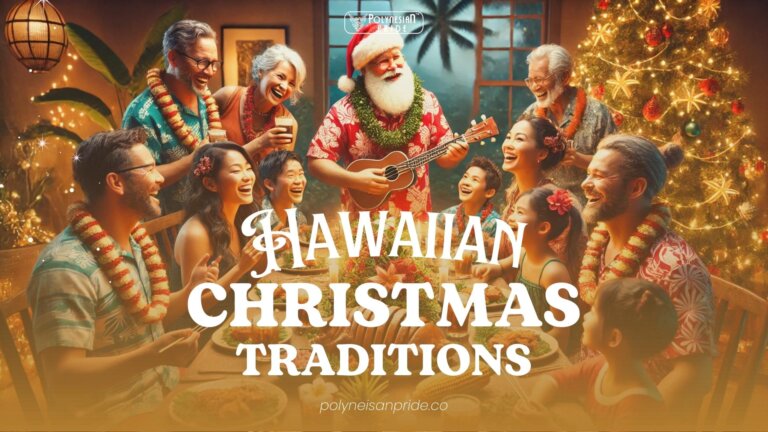Discover the Rich Culture in Guam: Traditions, Festivals & More

INTRODUCTION
Guam, a small but vibrant island in the western Pacific Ocean, boasts a rich and diverse cultural tapestry woven from centuries of indigenous traditions, colonial influences, and modern adaptations. Known as the “Land of the CHamoru”, Guam offers visitors a unique blend of ancient customs, contemporary practices, and multicultural influences that shape its identity. From indigenous CHamoru roots to the impacts of Spanish colonization, Guam’s culture is a testament to its people’s resilience, adaptation, and enduring spirit.
Indigenous Chamorro Culture in Guam
Guam Culture And History
The Chamorros, the indigenous people of Guam, have a rich cultural heritage that dates back thousands of years. Their traditional way of life was deeply connected to the land and sea, focusing on communal living and respect for nature.
Traditional Beliefs and Practices
Chamorro culture is rooted in spiritual beliefs emphasizing the connection between people and their environment. Traditional practices, such as rituals, ceremonies, and storytelling, are vital in maintaining cultural continuity.
Language and Literature
The Chamorro language, a Malayo-Polynesian language, is essential to the island’s cultural identity. Despite historical efforts to suppress it, the language has been revived recently. Chamorro literature, including oral stories and written works, reflects the rich history and traditions of the Chamorro people.

Guam Population
Guam’s people, known as Guamanians, form a diverse and friendly community that reflects the island’s rich cultural heritage. With a population of about 170,000, Guam’s vibrant society blends various ethnicities and the rich traditions of Guam people and culture.
Ethnic Diversity
Guam is a cultural melting pot due to its strategic Pacific location and history. The largest ethnic group is the CHamoru, making up about 37% of the population. Filipinos follow, comprising around 26%, with other Asian ethnicities, including Japanese, Korean, and Chinese, also represented. Additionally, the island hosts Micronesians from nearby regions and Caucasians linked to the U.S. military presence. This mix creates a multicultural environment where traditions and customs blend harmoniously.
Social Structure and Values
Guamanian society is rooted in strong family ties and community spirit. The extended family, or “familia,” is central to daily life, offering support and guidance. Respect for elders is paramount, with older family members often playing a pivotal role in decision-making. The CHamoru value of “inafa’maolek” emphasizes cooperation and working together for the common good, shaping social interactions and community events. Hospitality is a core aspect of Guamanian culture, with locals known for their warmth and friendliness toward visitors.

Religion in Guam
Historical Beliefs and Practices
Guam’s native people practiced ancestral veneration, honoring their ancestors by keeping their bones, mainly skulls, in small baskets within their homes. They performed rituals to seek guidance or specific outcomes. The spirits of the deceased, known as aniti, were believed to inhabit the forests and visit villages, causing disturbances like bad dreams or affecting local fisheries. Those who died violently were thought to go to Zazarraguan, while those who died peacefully entered a subterranean paradise with coconut groves and banana plantations.
Spanish Influence and Catholicism
From 1668 to 1898, Spanish rule introduced Catholicism, which quickly became the dominant religion. Christian holidays like Easter and Christmas became widely celebrated. The Spanish colonial administration influenced the adoption of Spanish surnames among the locals through the Catálogo alfabético de Apellidos. Most Guamanians are not of Spanish descent; they adopted these names as part of their conversion to Catholicism.
Modern Religious Landscape
Today, Guam’s religious scene is diverse. While 98% of CHamorus identify as Roman Catholic, other religious institutions like the Dominican Sisters, Sisters of the Good Shepherd, the Guam Buddhism Society, the Muslim Association of Guam, and the Redemptoris Mater Seminary also play significant roles. Ancestral worship continues alongside Christianity, reflecting Guam’s rich and complex religious heritage.

Traditional Arts and Crafts Culture in Guam
Guam Art and Craft
Traditional arts and crafts are vibrant expressions of Guam’s cultural heritage. Local artisans excel in weaving and carving, utilizing natural materials to create various functional and decorative items.
Weaving Traditions
Weavers in Guam use traditional pandanus and coconut fibers to craft an array of items, including baskets, purses, hats, floor mats, and wall hangings. These handmade pieces showcase intricate patterns and skilled techniques passed down through generations.
Carving Artistry
Carvers in Guam work with ifil and pago woods to produce beautifully crafted tables, plaques, figurines, and household implements. Their creations often depict people, animals, and cultural motifs, reflecting the island’s rich artistic traditions and craftsmanship.

The Dance and Music Culture in Guam

Belembaotuyan
One of the most captivating traditional instruments is the belembaotuyan. Crafted from a hollow gourd and strung with a taut wire, this unique instrument is pressed against the player’s bare stomach to produce an enchanting sound. The belembaotuyan’s melodic tones are a staple in cultural presentations, captivating audiences and providing a sonic glimpse into the island’s history.
Kantan Chamorro Singing Style
Kantan Chamorro is a cherished style of singing that has entertained generations. This traditional practice serves as a vibrant form of entertainment. It plays a significant role in easing the monotony of group work activities such as weaving, corn husking, and net fishing.
Bailan Uritao (Young Man’s Dance)
Bailan Uritao, or the “Young Man’s Dance”, is a Guam cultural dance from the ancient CHamoru era that vividly illustrates warrior training practices. Performed by uritao—young, unmarried men residing in the men’s house or Guma’ Uritao, the dance embodies both cultural significance and martial prowess.
The Bailan Uritao features lively jumps, shouts, and a dramatic clash of long sticks called tunas. These elements require precise coordination and agility, showcasing the dancer’s skills and strength. The rhythmic pattern of the sticks hitting together symbolically represents the construction of a latte house, culminating in a final pose where all sticks are held upright to form the pointed roof of the house. This dynamic performance reflects the rich heritage and warrior traditions of the CHamoru people.

Bailan Lina’la’: The Dance of Life
The Bailan Lina’la’, or “Dance of Life”, is a captivating traditional dance of the CHamoru people. It begins with women dancers elegantly entering through an arch created by uritao sticks held by male dancers. This arch symbolizes a transition into a sacred space or phase of life.
As the women pass through the arch, their graceful movements and rhythmic chants celebrate life, renewal, and community themes. The dance reflects the CHamoru values of elegance, tradition, and cultural continuity, making it a cherished part of their heritage.

Traditional Clothing in Guam
Women’s Traditional Clothing

Mestiza: The Mestiza is a traditional Guam cultural clothing garment that Guamanian women wear. It features a distinctive blend of Chamoru and Spanish influences. It typically includes a blouse with puffed sleeves and a long skirt, often made from brightly colored, patterned fabric. The Mestiza reflects the island’s rich cultural history. Guamanian women wear it during special occasions and cultural events.
The Muumuu: The Muumuu is a relaxed and comfortable dress that has become a staple in Guamanian women’s wardrobes. It is characterized by its loose, flowing design and is usually made from lightweight, colorful fabric. While it is less formal than the Mestiza, the Muumuu is famous for its practicality and ease of wear.
Men’s Traditional Clothing
The Lufuti is a traditional garment for Guamanian men. It typically comprises a wraparound skirt or loincloth paired with a simple shirt. The Lufuti is often worn during cultural ceremonies and conventional events, reflecting the island’s historical practices and style.
Chamorro Cuisine
Historical Roots of Guam’s Cuisine
The diet of Guam’s native inhabitants was rich and diverse, featuring fish, fowl, rice, breadfruit, taro, yams, bananas, and coconuts. Traditional cooking methods involved heated stones buried in a pit, similar to techniques many present-day Polynesian cultures used. European missionaries introduced maize, tobacco, oranges, lemons, limes, pineapples, cashews, peanuts, eggplant, tomatoes, several Annona species, leguminous vegetables, and garden herbs. Coffee and cacao were introduced later, further enriching the island’s agricultural diversity.
Unique Ingredients in Guam’s Cuisine
Guam’s cuisine features unique local ingredients such as fresh tuna and other fish, breadfruit, coconut, papaya, taro, and yams. One distinctive traditional element is the use of Mariana Fruit Bat (P. mariannus) meat in Chamorro dishes.

Influence of Spanish Colonization
Spanish colonial rule, which lasted over 200 years, significantly impacted Chamoru cuisine. Post-contact Chamoru food heavily incorporated corn-based dishes like tortillas, tamales, atole, and chilaquiles, reflecting the influence of Mesoamerican cuisine introduced through Spanish trade routes from Mexico.
Modern-Day Guam Cuisine
Today, Guam’s culinary landscape is a melting pot of indigenous Chamorro traditions and influences from Pacific Islanders, Asians, and Europeans. Spanish colonialism, primarily through its Mexican connections and contemporary American influences, has left a lasting mark on the island’s food culture.
Some popular Guam cultural foods include:
- Chorizo Breakfast Bowl: A hearty start to the day.
- Red Rice: A staple side dish made with red seeds from the achiote tree.
- Escovitch Chicharrón: A flavorful dish featuring marinated fried pork.
- Guyuria: A traditional Chamorro cookie.
- Rosketti: Another local favorite cookie.
- Kalamai: A Chamorro dessert.
- Banana Lumpia: A Filipino-inspired dessert, also known as turon.

Must-Visit Culture Festivals in Guam
CHamoru Heritage Day (Mes CHamoru)
Overview: Chamorro Month (Mes Chamoru) is an annual celebration in March dedicated to honoring and preserving the rich cultural heritage of the Chamorro people in Guam. This month-long event features a vibrant showcase of traditional practices, including dance performances, educational workshops, culinary experiences, and historical exhibits.
Highlights:
- Marianas Story Telling Matinee Series
- CHamoru food-tasting event
- Cultural workshops
- Crab Festival
- Dance and music performance

Fiesta de San Vitores
Overview: Fiesta de San Vitores is one of Guam’s most significant annual celebrations in honor of the island’s patron saint, San Vitores. This vibrant festival typically takes place in late April or early May and features a mix of religious ceremonies, parades, and cultural events.
Highlights:
- Parades and Processions: Colorful parades featuring traditional Chamorro costumes, music, and dance.
- Food and Music: Vendors offer local cuisine, and performances include traditional Chamorro music and dance.
- Cultural Exhibitions: Displays of Chamorro arts and crafts, showcasing the island’s rich heritage.
- Significance: This festival blends religious devotion and cultural celebration, highlighting Guam’s Catholic traditions and Chamorro identity.

Guam Micronesia Island Fair
Overview: The Guam Micronesia Island Fair, held annually in March, celebrates the cultural diversity of the Micronesian region. It brings together various island cultures to showcase their unique traditions and practices.
Highlights:
- Cultural Booths: Exhibits from different Micronesian islands, including traditional crafts, clothing, and artifacts.
- Dance and Music Performances: Traditional dances and musical performances across the Micronesian region.
- Food Tasting: An array of regional dishes from different islands, providing a culinary journey through Micronesia.
- Significance: The fair promotes cultural exchange and understanding, allowing visitors to experience the rich traditions of Micronesia in one location.

Chamorro Village Night Market
Overview: The Chamorro Village Night Market is held every Wednesday evening in Hagåtña, Guam’s capital. It is a lively market that offers a taste of local culture through food, crafts, and entertainment.
Highlights:
- Local Cuisine: Various Chamorro and other local dishes, including BBQ, seafood, and traditional desserts.
- Arts and Crafts: Handcrafted items, including traditional Chamorro textiles, jewelry, and artwork.
- Entertainment: Live music performances and cultural demonstrations, including traditional dance.
- Significance: The night market is a popular spot for locals and tourists to experience Guam’s culinary and artistic traditions in a vibrant, community-oriented setting.

Guam Liberation Day
Overview: Guam Liberation Day, celebrated on July 21, marks the anniversary of the island’s liberation from Japanese occupation during World War II. It is a day of remembrance and celebration of the island’s resilience and freedom.
Highlights:
- Parades: A major parade featuring floats, military units, and local organizations celebrating Guam’s history and culture.
- Historical Reenactments: Events and displays that commemorate the events of World War II and the liberation.
- Festivals and Gatherings: Community gatherings with food, music, and cultural performances.
- Significance: This day poignantly reminds us of Guam’s wartime history and celebrates its enduring spirit and freedom.

CONCLUSION
The culture in Guam is a rich tapestry woven from indigenous traditions, historical influences, and contemporary expressions. The island’s unique blend of Chamorro heritage, Spanish and American impacts, and diverse global influences creates a dynamic cultural landscape. By understanding and appreciating Guam’s cultural heritage, we can support efforts to preserve and celebrate this vibrant island community.
FAQs about The Culture in Guam
What Are The Facts About Guam Culture?
The culture of Guam, rich in Chamorro traditions, Spanish heritage, and American influences, beautifully showcases the diverse and vibrant culture of Guam.
What Are Some Of The Most Popular Guam Cultural Events Visitors Should Experience?
– CHamoru Heritage Day (Mes CHamoru)
– Fiesta de San Vitores
– Guam Micronesia Island Fair
– Chamorro Village Night Market
– Guam Liberation Day
What Are Some Of The Most Celebrated Guam Cultural Holidays?
Some of the most celebrated Guam cultural holidays include Liberation Day, commemorating the island’s liberation from Japanese occupation in World War II, and the Guam Micronesia Island Fair, a festival showcasing local traditions, crafts, and food. Other notable holidays are the Chamorro Cultural Festival and various local fiestas celebrating the island’s rich heritage and community spirit.
Who are the gods of Guam?
Puntan and Fu’una are the Chamorro creation gods. Puntan, a male, and Fu’una, a female, are brother and sister. Their account of creating the world is one of the most significant oral histories of the Chamorro people.

I am Leilani Miller – I research focusing on Vanuatu – volcanic landscapes, blue holes, coral reefs & rainforests. I have over five years of experience researching and sharing insights on tourism and environmental activism. Explore and experience without limits through my latest article.
Contact information:
Email: [email protected]
Tel: +1 (808) 555-1528






